What is IoT Conceptual Framework?
- 20 Sep 2024
In this article, we will cover what the term framework means within the context of IoT, discuss both proprietary and open-source IoT frameworks, and then proceed to provide an in-depth overview of the top IoT platforms of today.
Introduction
IoT framework. This refers to a set of technologies, protocols, and services intended to implement communication, data processing, and management involving IoT devices. Such frameworks make it possible to achieve a standard environment wherein devices, sensors, and applications can communicate, interact, and function together. An IoT framework is, therefore, the backbone that supports the development of IoT applications by providing predetermined functionalities like data collection, data processing, and visualization.
Hence, the IoT conceptual framework can be taken as an architect or blueprint that could be utilized for designing scalable, reliable and secure systems of the Internet of Things. Developers use IoT frameworks to gain momentum in the design and implementation of IoT solutions through the benefits of pre-built components, protocols, and development tools.
What do you mean by Open Source IoT Frameworks?
An Open Source IoT Framework refers to a set of resources, libraries, and protocols free to spread, deploy, and manage for the support of Internet of Things applications. Usually, they provide basic services by connection, processing, and communication in a way that is free of licensing fees. They are usually developed and managed by a community of developers and contributors that bring flexibility, transparency, and control over the whole IoT structure.
With open-source frameworks, there is ample provision for flexibility on the part of the developer in terms of code writing for specific needs thus providing a greater degree of personalization and adaptability to IoT. Some of the best examples include popularly adopted open-source IoT frameworks: ThingsBoard, DeviceHive, and MainFlux.
Today, such IoT solutions have been widely applied in smart homes, health care, industrial automation, and even in smart cities.
Some of the key benefits of open-source IoT frameworks include:
- Low cost: they incur no license fees, hence permitting them to reach even small businesses and startup
- Customer customization: direct access to the source code at their discretion enables developers to modify and tailor the framework according to individual needs.
- Community support: Open-source projects generally build huge communities of contributors that create support, updates, and development in general.
- Flexibility: Open-source IoT frameworks are extremely flexible by natively allowing things to get adapted as per the necessity of the technology. They can be easily integrated with other technologies, providing the freedom to choose the best components of a project.
Why Use an IoT Framework?
Using an IoT framework makes the development process easy for businesses, as it saves them time from starting scratch in their particular use cases.
Below are some key reasons why IoT frameworks are important:
- Standardization: IoT frameworks provide standardized communication protocols, such that devices from different manufacturers can talk to each other seamlessly.
- Scalability: Most frameworks are designed with the capability to serve millions of data and devices and, hence are scalable for small-scale or large-scale deployment.
- Security: The built-in features ensure security for IoT devices and data against cyber threats.
- Ease of Development: IoT frameworks come pre-built with various tools and components that will hasten the development process. Hence, the developer need not reinvent the wheel.
Types of IoT Frameworks
The concept of frameworks can be broadly categorized into two types-proprietary and open-source. Corporate-owned proprietary IoT frameworks are a proprietary category while open-source, community-developed, and non-commercially owned IoT frameworks are open-source frameworks.
1. Proprietary IoT Frameworks:
Some of the best IoT platforms are:
A. Amazon Web Services (AWS) IoT Platform:
The popularity of AWS IoT is due to the scalability and robust cloud services it offers. AWS IoT not only provides device connectivity with a message broker but also supports the solution for storing data through safe means - making it ideal for large-scale IoT applications. The device connectivity via AWS IoT Core enables smooth communication from devices to the cloud and between devices.
B. Microsoft Azure IoT Suite:
The package of comprehensive IoT services offered by Microsoft's Azure IoT Suite includes connecting the devices, capturing data from those devices, and running analytics through AI-based mechanisms. The solution is highly secured and scalable by covering most industry standards. This service primarily supports enterprise-level IoT applications that demand high performance and seamless integration with other Microsoft services.
C. IBM Watson IoT Platform:
The IBM Watson IoT mainly features robust analytics and machine learning capability to enable businesses to derive useful insights from the data generated by IoT.
One excellent reason why companies can choose this is because of how well it integrates with IBM's AI services for the enhancement of its IoT applications through the adoption of cognitive technologies.
D. Cisco IoT Platform:
Cisco's IoT framework is for managing networks of IoT devices and securing connectivity. It supports a wide range of protocols and edge computing capabilities, so it is well suited for use in industrial IoT applications where the data would need to be processed in real-time.
E. PTC ThingWorx:
ThingWorx is one of the most widely used IoT platforms provided by PTC. Those tools enable to create, develop, and operate IoT applications. They also provide real-time analytics, scalable infrastructure, and support for augmented reality (AR), which will make industrial IoT cases more valuable and productive.
F. Bosch IoT Suite:
Bosch IoT Suite is an all-inclusive product platform to build connected products and solutions. It provides cloud-based services for secure management of IoT devices, data, and applications, which can prove helpful in the manufacturing and automotive sectors.
G. GE Predix
Predix is designed for industrial IoT applications, based on using the cloud as the development, deployment, and operational base for large-scale IoT systems. Predix applies to all industries - from energy to transportation, and the general goal of Predix is enhancing operational efficiency.
2. Open-Source IoT Frameworks:
A. ThingsBoard:
ThingsBoard is an open-source IoT platform which lets data be collected, processed, and visualized. Its scalability; and support for both cloud and on-premises deployment make it ideal for companies of any size. ThingsBoard features real-time device monitoring, rule-based data processing, and dashboards that can easily be customized.
B. OpenHab:
OpenHab is a home automation open-source platform that integrates many devices and technologies into a single system. Its main advantages are its ability to offer flexible environments for smart home applications and support broad protocols and different kinds of devices. This is where the actual usage for personalization in individuals and businesses is achieved.
C. DeviceHive:
It is an open-source platform designed particularly for IoT application building and management. It supports a lot of IoT protocols and devices as well as features like real-time analytics, device management, and cloud integration. DeviceHive needs to be used with high-performance and scalability application requirements.
D. Mainflux:
Mainflux is an industrial IoT platform that provides secure connectivity, data processing, and management of devices, to scale up to huge numbers and employs various communication protocols. Mainflux is suitable for industries requiring safe and efficient management at scale in IoT deployments.
E. Eclipse IoT
Eclipse IoT is a collection of open-source projects that provides tools and frameworks for IoT developers. It features a large number of protocols, libraries, and services to build an application for an IoT. It is very good for developers who need a modular and flexible platform to build customized solutions.
Top 7 IoT Frameworks You Must Consider
In this section, we will dive into the top IoT frameworks in detail, discussing their key features and benefits.
1. DeviceHive
Features:
- DeviceHive is an open-source, highly customizable framework.
- It supports multiple communication protocols, including HTTP, WebSockets, and MQTT, among others.
- It allows real-time analytics of data and device management.
- Cloud, on-premises, and hybrid deployment options are available.
Benefits:
- Highly scalable, fits best large-scale applications.
- It offers powerful devices which can be monitored and controlled in real-time.
- This connectivity supports a very wide range of IoT use cases-from smart homes to industrial applications.
2. ThingSpeak
Features:
- These are an open-source project that is used to collect and analyze data.
- Their platform is also integrated with MATLAB for analyzing data.
- One can also visualize sensor data in real-time.
Benefits:
- It mainly benefits students or research purposes.
- The platform is easy to use, yet it provides powerful analytics.
- This platform allows rapid prototyping of IoT applications.
3. Zetta
Features:
- A platform built on Node.js - thus granting maximum flexibility and scalability.
- Real-time interaction with devices.
- It is an open-source platform based on which there are extensive documentation facilities.
Benefits:
- Suitable for developers who look for agile frameworks that have scalability as well as speed.
- Real-time visualization and control of data.
- Supports rapid development of IoT applications.
4. Thinger.io
Features:
- It's an easy-to-use dashboard for managing devices.
- Scalable with a wide variety of devices and protocols.
- Cloud, on-premises, and hybrid deployment models.
Benefits:
- A customizable and highly adaptable platform to support a lot of use cases.
- You can have real-time analytics and control of the device.
- Free and open-source; hence, it is accessible to developers and small businesses.
5. MainFlux
Features:
- Industrial-grade IoT platform supports various protocols.
- Highly secured, scalable, and compatible for large-scale deployments.
- Largely open source with community-supported.
Benefits:
- Ideal for industrial IoT use cases.
- It offers secure, seamless device connectivity.
- Extremely wide range of use cases from smart cities to manufacturing.
6. Arduino
Features:
- A major open-source platform for prototyping and developing IoT devices.
- Can support an enormous number of sensors and modules.
- The IDE is easy to use, and community support is extensive.
Benefits:
- Best suited for educational and DIY IoT projects.
- Largest body of libraries and modules available.
- Supports rapid prototyping and development.
7. OpenRemote
Features:
- It is an open-source IoT platform for smart city and industrial applications.
- Real-time data visualization is possible along with control.
- Extremely customizable and scalable.
Benefits:
- Good for large deployment scenarios.
- Flexible in terms of deployment choices - cloud, on-premises, hybrid.
- Strong community support and an abundance of documentation.
Conclusion
IoT frameworks are probably critical to the development and management of IoT applications. Whether you're creating a small smart home solution or large-scale industrial IoT deployment, the selection of the right IoT framework is highly essential for success. From proprietary platform solutions like AWS IoT and Microsoft Azure to open-source ones such as ThingsBoard and DeviceHive, each has its specific features and advantages catering to different use cases.
With this knowledge of the strengths and capabilities within each IoT platform, well-informed decisions can then be made by developers and businesses to align with their individual needs and objectives.
Frequently Asked Questions
1. What is an IoT framework?
An IoT framework defines the set of tools, protocols, and services that support the development, deployment, and management of IoT applications and devices.
2. Why do we need an IoT framework?
IoT frameworks make the application development process easy, provide standardization, and improve scalability and security, so the design of any reliable and efficient IoT system becomes much easier.
3. What are proprietary and open-source IoT frameworks, and how do they differ?
Proprietary IoT frameworks are owned and maintained by companies. On the other hand, open-source IoT frameworks are developed by communities and are free for public use.
4. Which are the best IoT platforms?
Some of the best IoT platforms are AWS IoT, Microsoft Azure IoT, DeviceHive, ThingSpeak, and MainFlux.
5. Why is security important in IoT frameworks?
Security is a must-have element within the IoT framework for the protection of devices, data, and networks from cyber-attacks. In the integrity and privacy of systems in IoT, confidentiality is ensured.
Recommended

No Blog’s Available
We're unable to find the blog that you're looking for...

